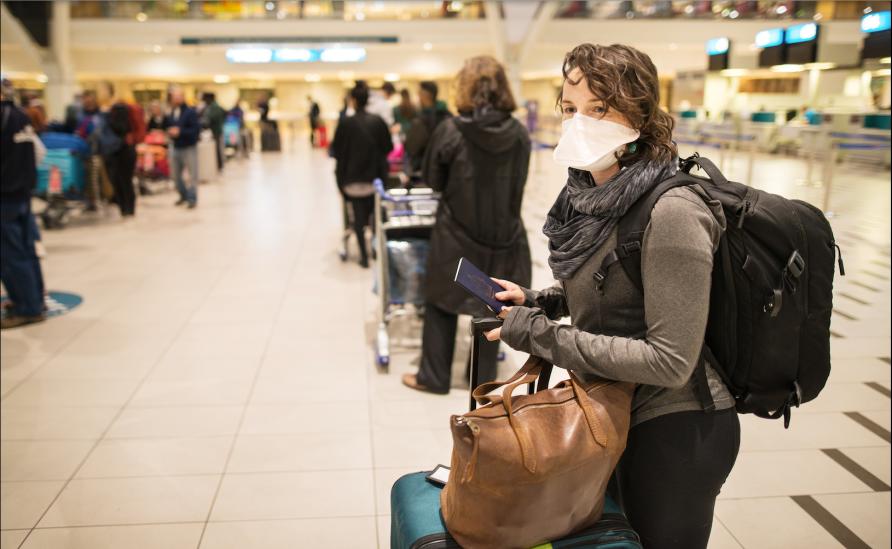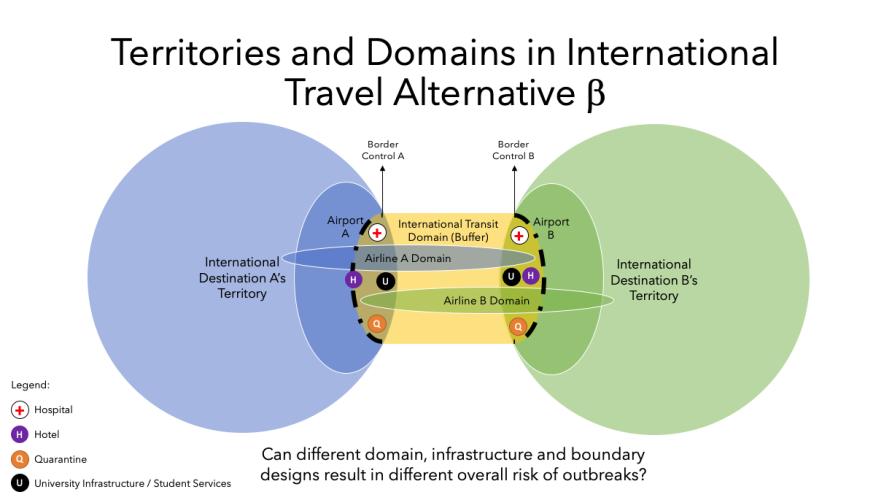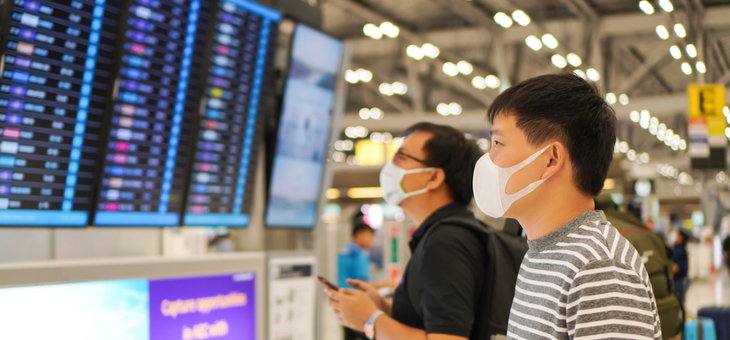Dr David Ashmore, Dr Jason Thompson and Dr Leonardo Nogueira de Moraes
Cases of inadequate screening, the quarantining of incoming cruise ship and airline passengers have exacerbated the importation and spread of SARS-CoV-2 in Australia and its transmission across state borders.
The results have triggered the Hotel Quarantine Inquiry in Victoria and the Ruby Princess Inquiry in New South Wales.
These issues have exposed the crucial role that adequate quarantine – a word derived from the original 40-day period ships were required to anchor before disembarking in Venice during the Middle Ages – still plays in protecting otherwise vulnerable populations.
 As portals of entry, international airport precincts can help successfully manage international travel connectivity safely. Picture: Getty Images
As portals of entry, international airport precincts can help successfully manage international travel connectivity safely. Picture: Getty Images
Our limited capacity to successfully quarantine incoming passengers has translated as a cap of 4000 returning Australian citizens and permanent residents allowed to enter the country each week.
Covid-19: A challenge and an opportunity for public transport
It also prevents the opening of our national borders to international students and visitors – heavily affecting the tourism, aviation and higher education sectors as well as the health of our national economy.
The development and administration of effective treatments and vaccines are critical strategies to decrease our individual vulnerability to the virus and our community vulnerability to the pandemic and to its consequences.
In their absence, avoidance of exposure is a critical way to reduce that disaster risk.
Leveraging our screening and quarantine capacity is an essential part of this equation, and airports clearly have a key role to play.
As portals of entry, international airport precincts are critical in ensuring Australia can successfully manage international travel connectivity while minimising the risk of new imported outbreaks.
COVID-19 also highlights international airports’ opportunity to help re-ignite Australia’s economy by broadening their role and function in our society – becoming aerotropoli.
 Typical Airport Design. Graphic: Supplied
Typical Airport Design. Graphic: Supplied
The concept of the aerotropolis offers a potential way forward to help reduce disaster risk.
Aerotropoli function as airport cities that are importantly within – but distinct from – the major cities they serve, emphasising the airport’s centrality in enabling surrounding development and infrastructure.
Disasters, planning and Australian tourism
Their location and size allow the establishment of special zones for innovation, trade, manufacturing, research and the provision of specialised services, including medical facilities and, yes, quarantine facilities.
Aerotropoli may also feature convention centres, significant hotel capacity and even dedicated military bases.
Crucially, with a surrounding stock of vacant land and holding large-scale infrastructure, aerotropoli can prove essential to the establishment and re-purposing of temporary and permanent infrastructure during disasters; increasing our disaster resilience and adaptive capacity to respond to pandemics and recover from their impacts, as well as reduce the risk of future biohazard disasters.
In the context of COVID-19, re-imagining international airports as aerotropoli allows the vision of a buffer zone where large-scale, highly-controlled quarantine could take place. It means leveraging our capacity to welcome returning Australian residents and to re-open our borders to international students and visitors to foster economic recovery.
This buffer zone could also bring greater resilience to future pandemics and outbreaks – decreasing the likelihood of entire cities being subject to lockdowns.
 Possible Alternative Airport Design. Graphic: Supplied
Possible Alternative Airport Design. Graphic: Supplied
Ensuring places of quarantine are spatially concentrated within a specific area of the aerotropolis allows for the demarcation of sterile zones with controlled access by highly trained personnel only, considerably diminishing community levels of exposure to biohazards.
Architecture and design in a post-pandemic world
Furthermore, the specific legislative and regulatory frameworks that apply to most major Australian international airports could prove fertile ground for the establishment of national quarantine standards and the development of national centres of quarantine excellence.
With the right infrastructure, these buffer zones could foster the development of a quarantine economy comprising medical treatment, wellbeing, education, business and entertainment, specifically designed to ensure the highest adherence to health and safety protocols.
Arriving international students, for example, could be offered remote onboarding services and support by their host university, the opportunity to digitally connect with future classmates, and the possibility of completing online modules while in quarantine.
Albeit spatially removed from their host city, these students would still be able open a bank account, obtain an Australian SIM-Card and have access to real estate agency services, helping them transition into life in Australia.
Quarantine requirements have changed considerably since SARS-Cov-2 was first identified as a threat to Australia.
 COVID-19 has exposed the importance of spatially organising and connecting our cities in the context of pandemics. Picture: Getty Images
COVID-19 has exposed the importance of spatially organising and connecting our cities in the context of pandemics. Picture: Getty Images
Responding to changing levels of assessed risk, these requirements ranged from highly-controlled quarantine of Australian Wuhan-evacuees on Christmas Island, to mandatory self-isolation of returning international travellers, which later evolved into mandatory quarantine in designated hotels.
The pilot group of international students originally planned to arrive in Adelaide in September could be an important step in refining quarantining and screening arrangements moving forward.
COVID-19 has exposed the importance of managing how our cities are spatially organised and connected in the context of pandemics.
Airports are a critical piece of that puzzle and may be even more important in the future.
Banner: Shutterstock
How comfortable would you be in an airport after COVID? What would it take to get you flying internationally again?
If you enjoy our content, don’t keep it to yourself. Share our free eNews with your friends and encourage them to sign up.
Related articles:
https://www.yourlifechoices.com.au/travel/news/airports-furthest-from-city-namesake
https://www.yourlifechoices.com.au/travel/news/airports-failing-older-flyers
https://www.yourlifechoices.com.au/travel/news/flying-how-to-avoid-coronavirus




